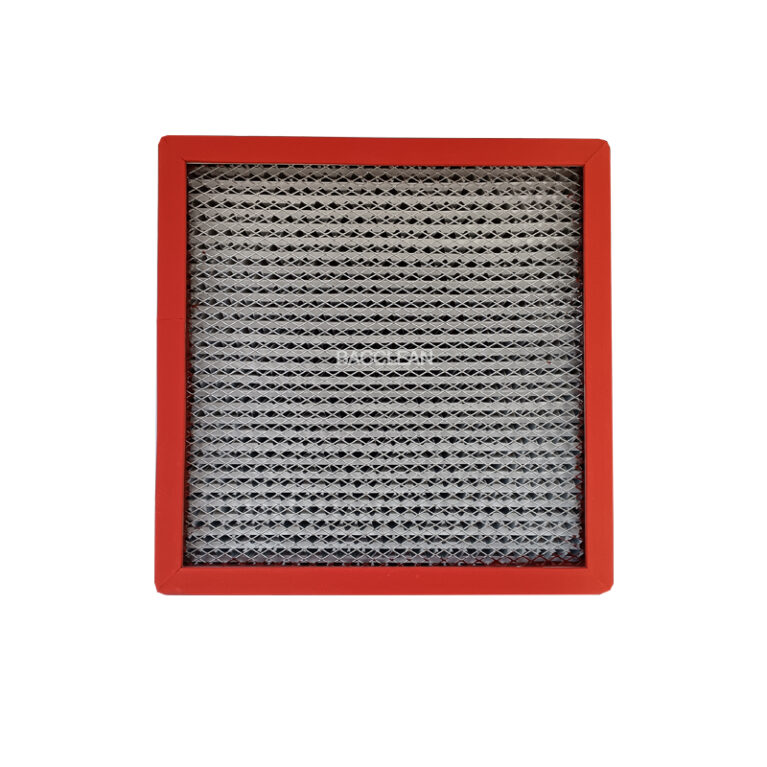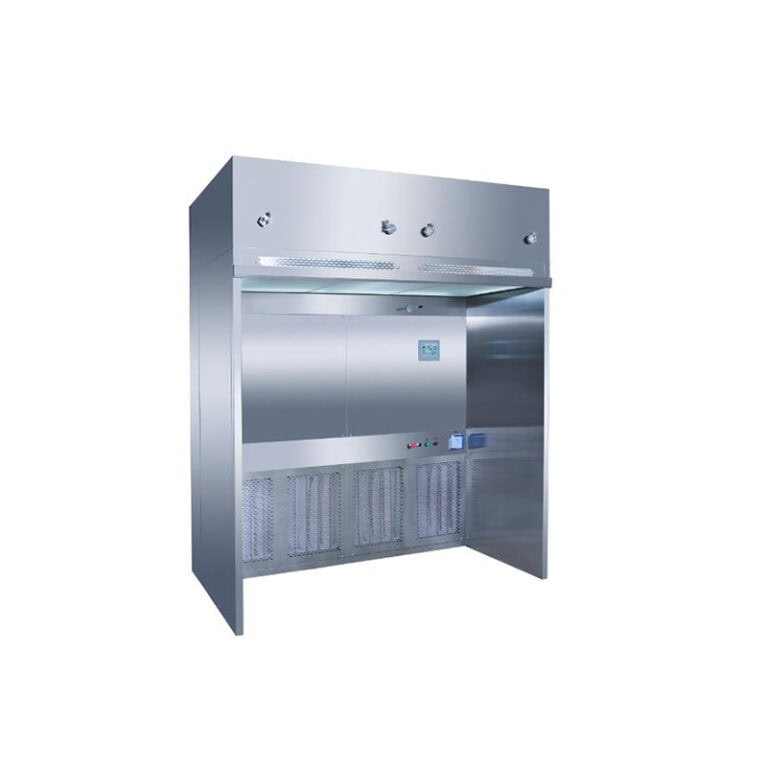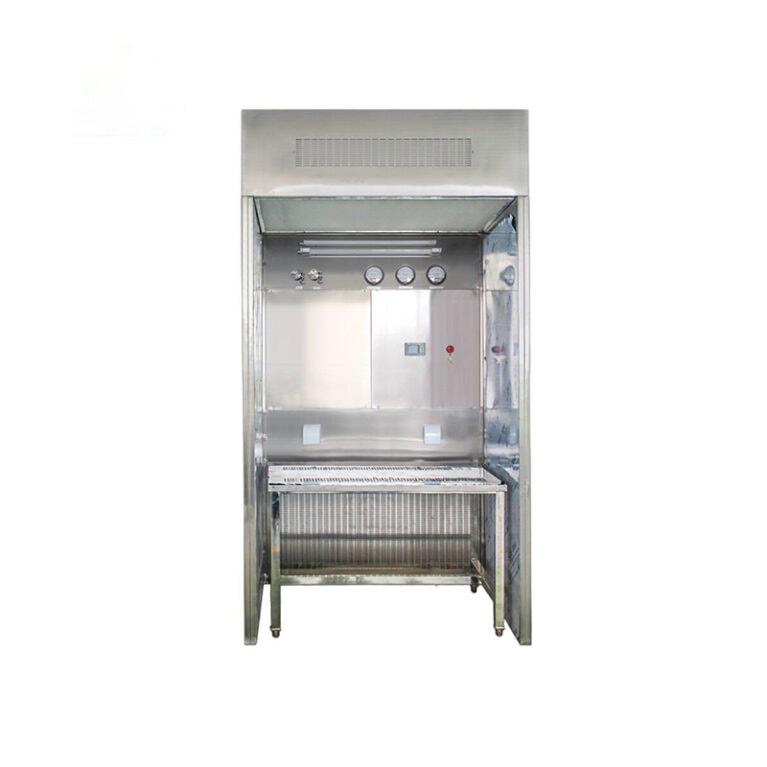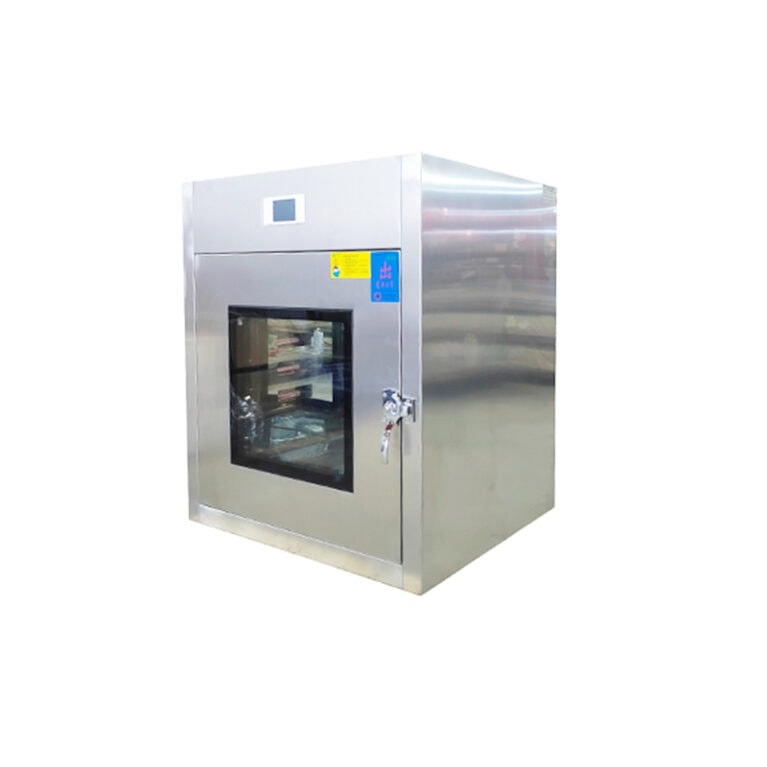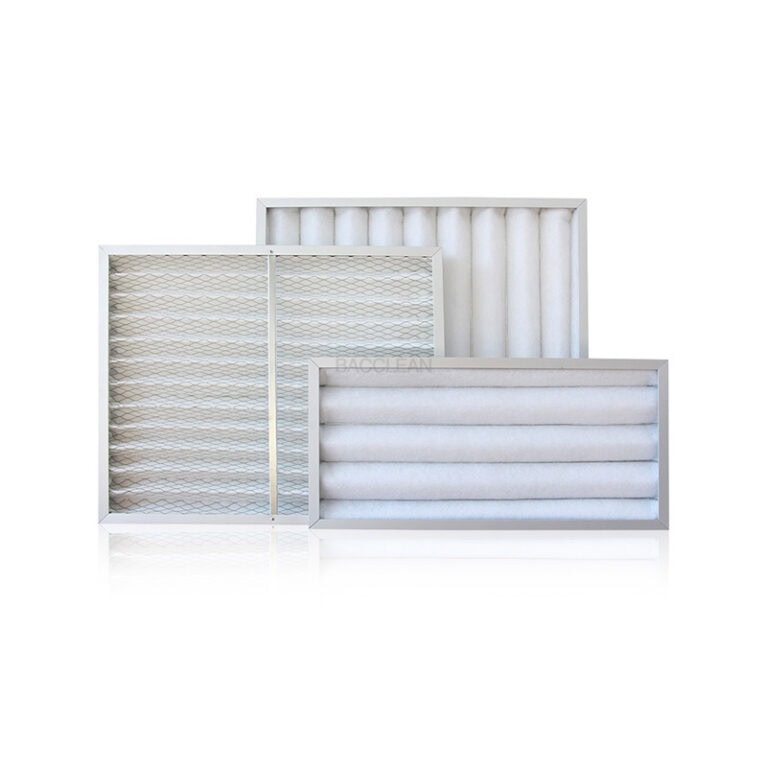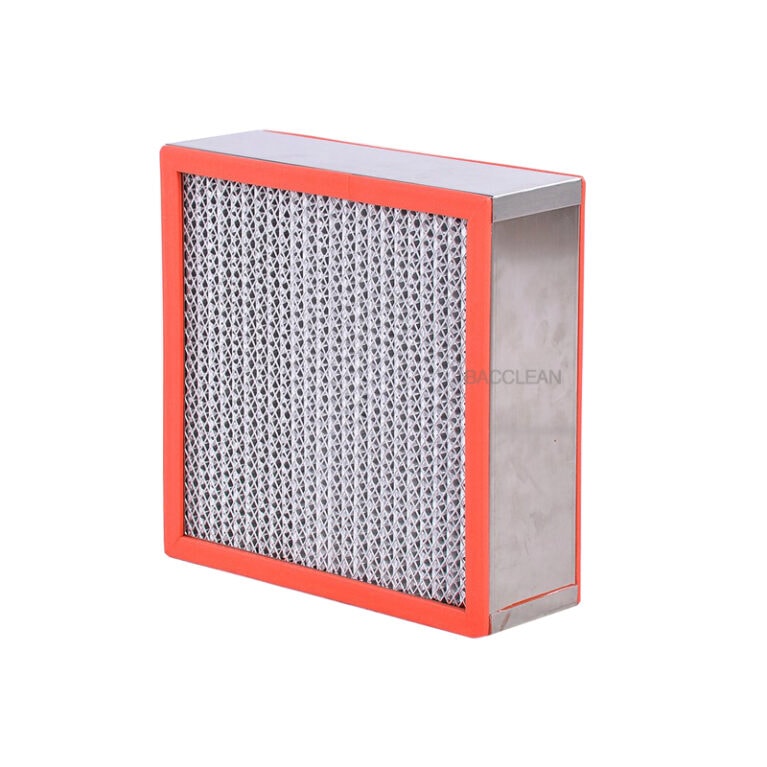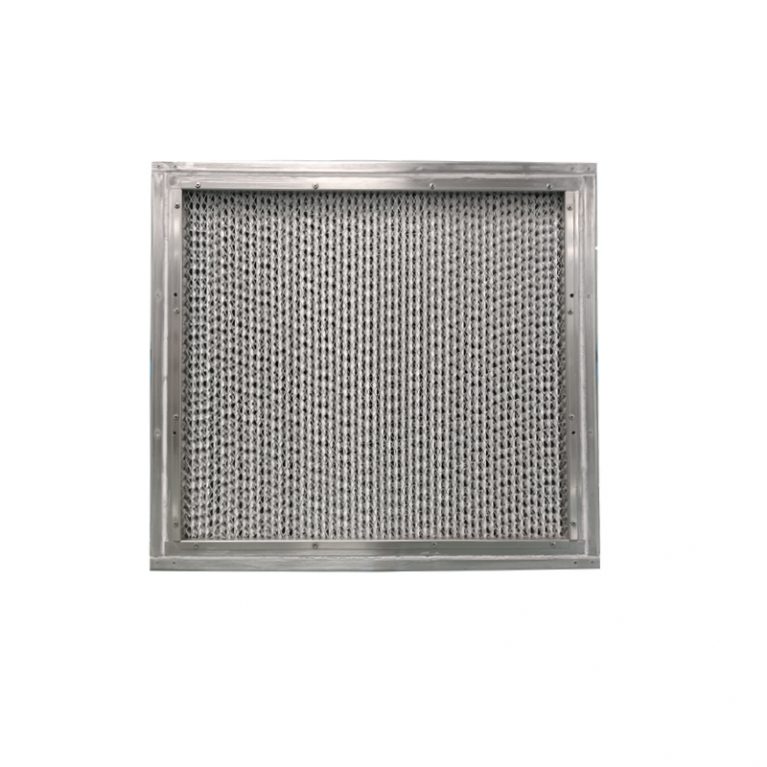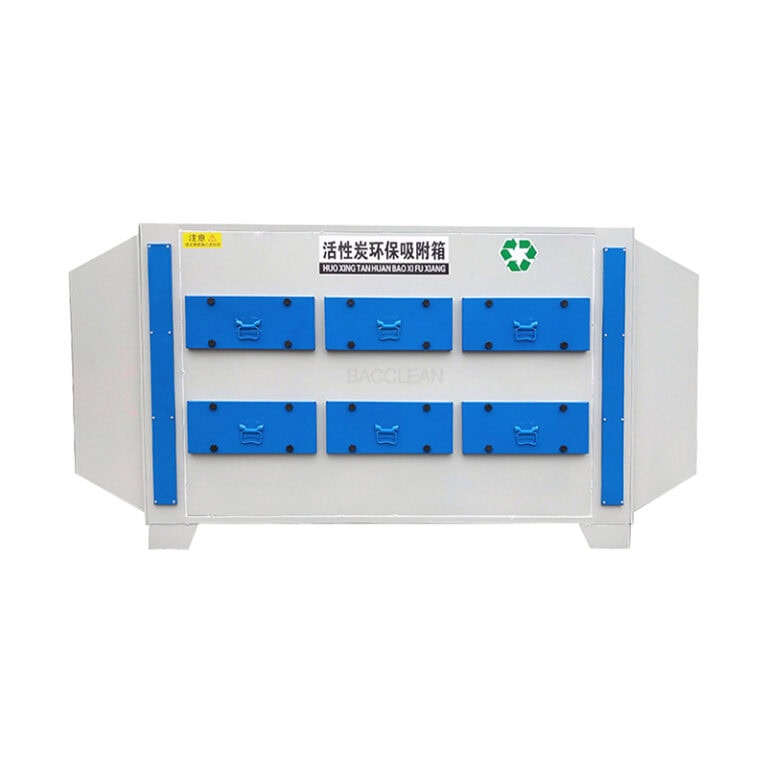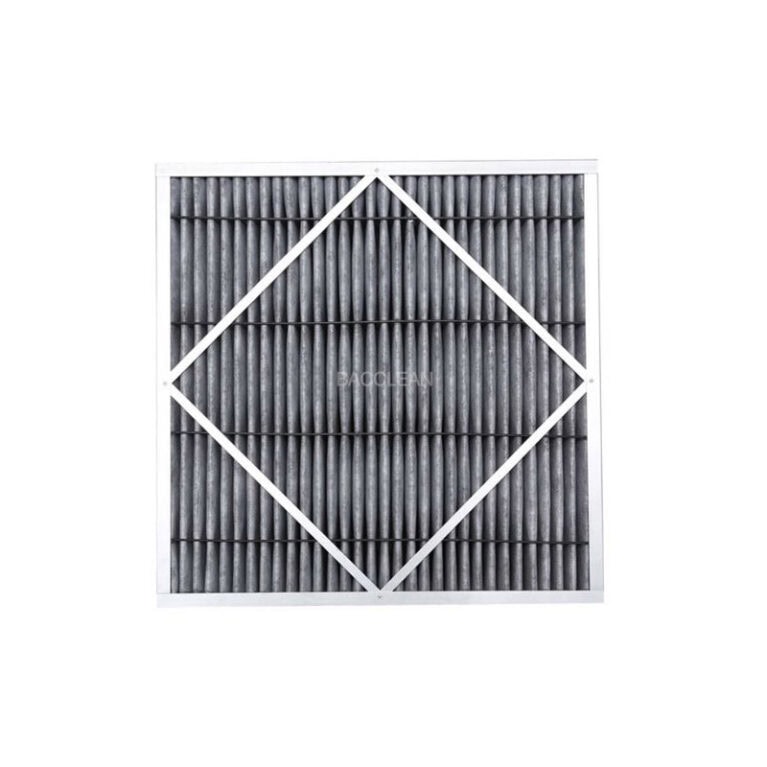The core working principle of the vertical flow workbench is to create a local high-cleanliness environment in the operation area through vertical unidirectional clean air flow, while achieving bidirectional protection for the operator, operation samples, and the external environment. Its specific workflow and key mechanisms are as follows:
I. Core Mechanism: Vertical Unidirectional flow and Efficient filtration
The core of the vertical flow workbench is to filter air with HEPA (High Efficiency Air Filter) or ULPA (Ultra-High Efficiency Air Filter), and through a specific air duct design, make the clean air flow through the operation area in a vertical direction (from top to bottom) to form an “air curtain barrier”, which specifically includes three key links:
Air intake and primary filtration
External air (or part of the circulating air) is first drawn in by the built-in fan of the workbench, and then processed by the primary filter to remove large particles of dust (such as particles with a diameter of ≥5μm) from the air, protecting the subsequent high-efficiency filter from contamination and extending its service life.
High-efficiency filtration (core purification
The air that has undergone initial filtration enters the HEPA/ULPA filter (with a filtration efficiency of ≥99.97%@0.3μm particles, and ULPA can reach 99.999%@0.12μm), which almost completely removes microorganisms (bacteria, fungi, viruses), fine dust, aerosols, and other pollutants in the air, forming clean air.
Vertical airflow distribution
Clean air is evenly distributed through the uniform flow membrane (or air diffusion plate) on the top of the workbench and flows vertically downward through the operation area (workbench surface) at a speed of 0.3-0.5m/s, covering the entire operation space. Subsequently, the airflow is discharged from the exhaust vents at the bottom or rear of the workbench (for some models, part of the clean air is recycled and the rest is discharged outdoors).
Ii. Maintenance of Clean Environment: “Air curtain” isolation and Unidirectional flow Protection
The vertically downward clean air flow forms an invisible “air curtain”, which functions in two aspects:
Prevent external contamination from entering: Clean air flow forms a positive pressure environment in the operation area (relative to the external environment), and unfiltered air from the outside cannot enter the operation area due to the pressure difference, ensuring that the operation area is always in a highly clean state (usually reaching ISO level 5, that is, a cleanliness level of 100).
Rapid removal of internal contaminants: Contaminants generated during operation (such as volatile substances from experimental samples, dander shed by operators, particles brought in by operation tools, etc.) will be rapidly pushed to the bottom of the workbench by the vertical airflow and discharged through the exhaust system, preventing diffusion or sedimentation in the operation area and thus maintaining local cleanliness.
Iii. Safety Design: Realization of Bidirectional Protection
The airflow direction and exhaust design of the vertical flow workbench enable it to provide bidirectional protection for both the operator and the operation samples.
Protecting samples: Clean air flow directly covers the samples to prevent them from being contaminated by microorganisms or particles in the external environment (such as in cell culture and the production of sterile drugs).
Protecting operators: Harmful pollutants generated during operation (such as pathogenic microorganism aerosols and toxic chemical volatiles) are guided downward by vertical airflow to the exhaust system instead of being blown towards the operator’s breathing zone, reducing the risk of personnel exposure (especially when handling hazardous samples).
Summary: The core logic of the working principle
The vertical flow workbench, through the process of “suction → primary filtration → high-efficiency filtration → vertical flow distribution → covering the operation area → carrying away contaminants → discharge”, utilizes the unidirectionality and pressure difference of clean air flow. It not only creates a local sterile and dust-free operation environment but also achieves dual protection for samples and personnel through a reasonable air flow direction. This is also the core reason why it is widely applied in high-precision fields such as biomedicine and pharmaceuticals.
